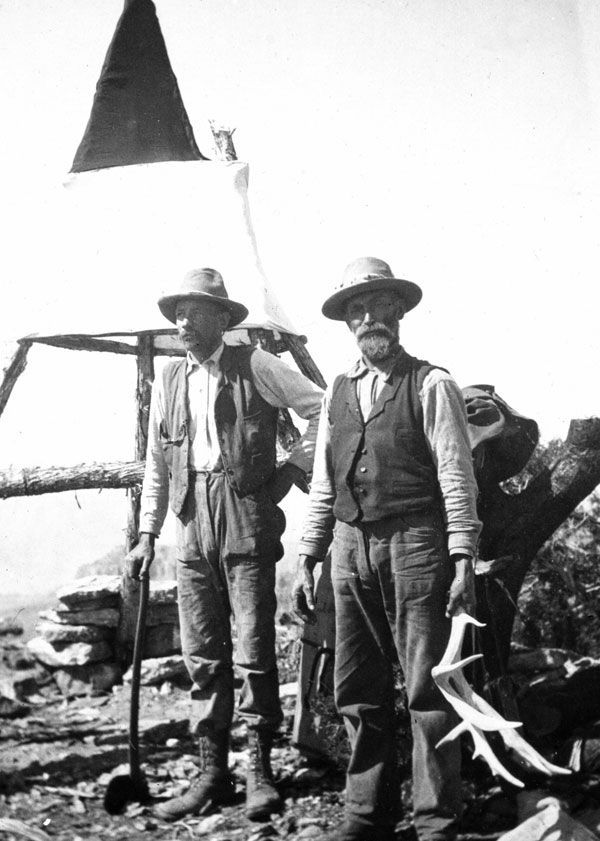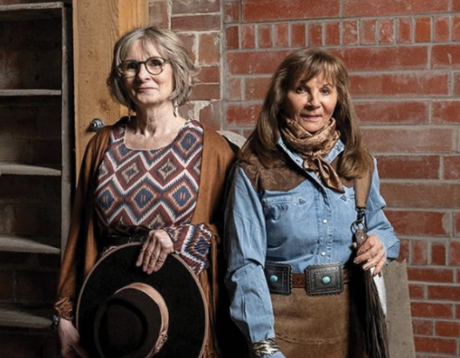
The most famous guide in the Grand Canyon was a Canadian named Louis Boucher. He was born in Sherbrooke, Quebec around 1840 but his self-proclaimed restless spirit took him throughout the West.
He was a prospector by trade, and like thousands of others, he passed through Victoria in the early 1860s heading to the Fraser and Cariboo gold rushes. It was at this time that he took to riding a mule and leading another to carry his gear and from this time on, mules became part of his trademark. Like many others he did not get rich at the Cariboo diggings, so he headed to the Southwest where silver ore bodies were being discovered. In the late 1800s he was prospecting in Arizona and, between forays into the desert, he worked as a guide for the Hance Ranch leading tourists into the Grand Canyon on mule rides.
In 1891 he found what he thought was the perfect spot to put down roots — a place called Dripping Springs. All such sources of water catch the attention of everything and everyone in the desert and so it was with Boucher. It is a particularly beautiful amphitheater-shaped basin located in the Grand Canyon area. He built a simple but comfortable camp consisting of two tents, a corral for his mules and the few head of sheep that he raised. He even kept some goldfish in a trough just for the enjoyment of watching them swim around.

Boucher was a quiet man who lived an isolated life in the canyon, so he was nicknamed ‘The Hermit’ even though he did not avoid people and often guided many tourists on his mule rides. He simply felt, as did the poet Badger Clark, that “I loved my fellow man the best, when he was scattered some.”
In 1903 Boucher even helped in the unsuccessful search for two men who were lost in the canyon but, despite his efforts, they were later found to have drowned in the Colorado River. Boucher’s approach to search and rescue would not be considered politically correct today as he used dynamite, setting off blasts that he hoped would attract the two lost men. He was well supplied for this method since, as a prospector, he kept plenty of explosives on hand.
In later years, Boucher’s trademarks were a snow-white beard and a white grey mule named Calamity Jane who always wore a silver bell around her neck. “It makes it easier to find your mule that way,” he once explained. We can only guess at the mule’s personality and behaviour from the name he gave her. He hand-built the Silver Bell Trail (named after his mule’s bell) which led from the rim to Dripping Springs and then out around Columbus Point to Boucher Canyon.
In his canyon oasis Boucher planted an orchard that included 75 orange, fig and pomegranate trees and beside these fruit trees he built a simple irrigation system and several simple cabins for tourists. Best of all, from a prospector’s point of view, he had next to the orchard something of a small but promising copper mine.

Unfortunately his prospecting attempts and the copper mine didn’t pan out as he had hoped and so in 1912 he moved to Moreland, Utah, where he worked in a coal mine. He left behind the Hermit Trail, the Boucher Trail, the Silver Bell Trail and a canyon named after him as well. What became of the mule Calamity Jane has been lost to history.
In 1938 coal production became unprofitable and the town was abandoned, and now is marked only by old foundations and railroad tracks.
Perhaps the greatest mystery concerning Louis Boucher is what eventually became of him. Some stories claim he returned to Canada. Others claim he died in Moreland. I think that it is more likely that he kept looking for the mother lode until one day, the vast expanses of the Southwest desert just simply swallowed up Louis Boucher, the old hermit guide of the Grand Canyon.















